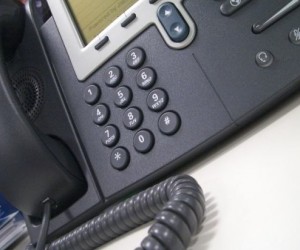By Caroline M. Cole
It can be a commencement speech. Perhaps a greeting card sentiment or yearbook inscription. Maybe it’s a banquet toast. Possibly it’s an informal conversation in the kitchenette or around the photocopier at work. It can even be an inspirational quote overlaying a photo that’s been downloaded, posted, “liked,” tweeted, and retweeted ad infinitum via Facebook, Tumblr, Twitter or some other social media feed. Advice is plentiful, but especially at this time of year, where graduations, weddings, baby showers, and other milestones provide myriad opportunities for well-meaning individuals to offer their observations, wisdom, and counsel on everything from careers, relationships, family planning, car and home purchases, vacation venues, and so on. And though well intended, as Philip Dormer Stanhope, the fourth Earl of Chesterfield, observed, “advice is seldom welcome, and those who need it most, like it least.”
Sometimes it’s because the intended recipients are distracted—as is often the case with graduates, wedding couples, and new parents who simply want to celebrate the occasion before absorbing new lessons. Sometimes it’s because advice, grounded in logic, struggles to find an audience in those who are processing the emotional. Sometimes it’s because people want the opportunity to make their own decisions and, by extension, their own mistakes. Sometimes it’s because people aren’t looking for advice per se but, rather, validation of what they’ve already decided or, increasingly, someone simply to listen. Yet while humorist and social commentator Will Rogers once said “never miss a good opportunity to shut up,” there are times when guidance, opinions, and even warnings are necessary.
Recognizing that any advice on how to give advice can be inherently hypocritical, this discussion’s approach to examining effective communication strategies focuses on questions we might ask before offering our suggestions, thereby ensuring our advice is both given and received in the best possible manner.
• Who are the participants in the exchange? Speech is a socially situated act, prompting participants to adopt the communication frameworks and strategies, norms, resources, and authority ascribed to them in other forums. Consequently, some individuals will feel more compelled to give (or accept) advice as a means of expressing or reinforcing the social relationships evident elsewhere; for example, parents, teachers, managers, advisors, and others who feel responsible for advising children, students, employees, clients, and the like may resist accepting any guidance these younger, less experienced, or even subordinate individuals could offer. However, the power dynamics which affect the ways participants relate to one another can also shape how participants contribute to conversations.
Drawing upon the work of social anthropologist Edwin Ardener, Cheris Kramarae, professor emeritus of speech communication and women’s studies at the University of Illinois at Urbana-Champaign, developed a “muted group theory” for communication, which helps explain how various groups come to understand and articulate their world views. Noting that males and females have different access to the authority and resources associated with power, Kramarae argues that they adopt different communication strategies to influence their own and others’ lives.
Males and, depending on the context, others in a dominate social group, for example, tend to adopt a communication style that privileges flat statements, assertions, emphatics, and directives, thereby presenting themselves as knowledgeable, confident, and authoritative. Enjoying the status that comes with being perceived as decisive leaders who are able to resolve issues and solve problems, males continue to employ these linguistic features in both formal and informal contexts. As such, even the most innocuous conversations can suggest minimal give-and-take between participants, as those in the perceived dominant group work to gain or maintain an elevated position through pronouncements and directives.
In contrast, females and others who occupy “muted” or subordinate positions tend to adopt a communication style that uses interrogatives, tag questions, raised intonations, hedges, and back-channels; that is, the feedback listeners give while someone is speaking to show continued interest (e.g., uh-huh, yeah, right, okay, hmm, really, wow). These style choices—coupled with the degrees of facial expressivity, eye-contact, torso alignment, proximity, and other body language cues tolerated in females—continue to fuel the stereotype that females are “good listeners.”
Various scholars suggest that muted-group communication strategies are more effective for encouraging discussion, collaboration, and negotiation. Unfortunately, as Dale Spender argues in Man Made Language, the mere fact that muted-group language structures deviate from those preferred by dominant group members means that these communication style choices—and those who use them—are considered aberrant from the “norm” and, thus, derided for being hesitant, uncertain, passive, and weak.
On the surface, this research may seem to have little relationship to the topic of advice-giving strategies, yet the connection isn’t necessarily the communication styles someone might adopt. Rather, it’s the roles participants may assume (consciously or unconsciously) in the discussion. Namely, taking up or falling into a dominant or muted group role can quickly shift an otherwise mundane conversation between partners, family members, friends, colleagues, and even strangers into a subtle if not palpable struggle for domination, and in the context of advice, that shift can be detrimental.
Because conversations often involve individuals who represent groups with varying levels of status, recognizing potential power imbalances and identifying ways we may be defaulting to or evoking communication styles that create or sustain those imbalances can help us see ways in which we may be inadvertently undermining our conversations with others.
• What is the purpose of the exchange? Renaissance scholar Desiderius Erasmus cautioned “don’t give your advice before you are called upon,” and yet most people, wanting to be of service, prematurely offer suggestions, counsel, and directives. The critical word, here, is “prematurely.”
We are a culture that believes in acting, doing, addressing, solving, and so on, equating movement with progress and stillness with stagnancy. Some people, however, may be neither be looking for nor needing advice. They may simply want someone who can listen without judgment, someone who can be present with them in their confusion, anger, frustration, or pain.
In his book The Road to Daybreak: A Spiritual Journey, Henri J. M. Nouwen writes that “when we honestly ask ourselves which person in our lives mean the most to us, we often find that it is those who, instead of giving advice, solutions, or cures, have chosen rather to share our pain and touch our wounds with a warm and tender hand. The friend who can be silent with us in a moment of despair or confusion, who can stay with us in an hour of grief and bereavement, who can tolerate not knowing, not curing, not healing and face with us the reality of our powerlessness, that is a friend who cares” (emphasis added).
Perhaps, then, when tempted to interject comments that begin “you should…” or “you need to…,” we might instead aim to be actively, but silently present. In our silence, we may discover they just need to vent or verbally process information. Or we may learn they actually want or need assistance, but we’re not the best person to provide it. If nothing else, we might ask if there’s anything specific we could do, rather than presume we know the answers.
By letting the other person shape the parameters of the conversations, we may be of greatest service by offering something even better than advice: empathy.
• Do we understand the situation as the other person sees it? Our advice can be only as good as our understanding of a given situation. Therefore, rather than assume we know or understand what someone may be experiencing, feeling, or needing, we might heed the words of Greek philosopher Epictetus: “Nature hath given [us] one tongue but two ears, that we may hear from others twice as much as we speak.”
Reconnaissance should be our first goal, working to gather as much information as possible—withstanding interpretation in the process—so as to understand the circumstances as the other person sees it. To clarify context or to fill in gaps, we might ask conventional reporter questions (e.g., who, what, where, when, why, how, to what extent, with what effect), resisting the urge to prepare comments and answers we could offer once they’ve finished talking. Similarly, if we find ourselves thinking about times we’ve been in comparable positions, we might refrain from interjecting statements such as, “I know how you feel…” (which can sound patronizing) or “I experienced something like that…” (which can redirect the focus away from them and onto us).
Empathizing with the person’s fear, anxiety, frustration, and so on is crucial in active listening, but it’s equally important to remember that different contexts, participants, resources, agendas, biases, and so on can alter a seemingly like situation in any number of ways. And while sometimes those differences may be negligible, sometimes the variations require unique responses. By working to understand things as the other person does, we could offer compassionate suggestions when—or if—we are asked.
• Is the advice we offer in the recipient’s best interest? The best suggestions help others move forward in the ways they want to move so they can become the best versions of themselves. As such, we need to keep our own egos in check.
Passing along our experience and wisdom can be of use to others, but sometimes we share information for our own benefit: to seem smart, worldly or wise; to appear responsible; to share the spotlight; to remain in control; and so on. While such motives do not necessarily discredit the advice we offer, they can raise questions about the real motives for or beneficiaries of any suggestions we might be able to give, thereby prompting others to ignore even the best ideas.
The more we are able to keep the other person’s success and well-being as our primary goal during the exchange, the more likely we are to provide advice that is, according to Samuel Taylor Coleridge, “like snow—the softer it falls, the longer it dwells upon, and the deeper in sinks into the mind.”
• Is the advice we offer achievable? Greek playwright Aeschylus observed that “it is an easy thing for one whose foot is on the outside of calamity to give advice.” Yet while giving advice may require minimal effort, offering suggestions that actually help others reach their goals in a manageable, effective way can be challenging.
In an effort to be swift in our assistance, we may give suggestions that conflate countless smaller steps; unfortunately, if we aren’t willing to help unpack that advice, it can come across as unrealistic, insensitive, or flippant. Consider, for example, employees who feel unhappy at work being told they should “just get another job” or “quit,” or students who are struggling with courses being advised to “apply themselves” or “study more,” or children who may have difficulties making friends being encouraged to “put yourself out there,” or people struggling to loose weight being advised to “eat less” and “exercise more.” Though well-intended, these and other abridged suggestions can seem impossible or even cruel to those who may want to change their circumstances but who may need smaller, concrete steps to understand how to do so—and sometimes those steps are easier to see through questions and inductive reasoning, rather than imperatives.
Using the case of those who may feel stuck at work, rather than suggest they “suck it up,” “be grateful they have a job in today’s economy,” or some other sweepingly general action, we might engage them in a conversation about when they feel stuck, why they feel stuck, how long they’ve had such feelings, and what they think needs to happen or change for them to feel more engaged. We might also ask about the things they enjoy doing at work, tasks they find interesting, projects they would like to do, and so on.
Such conversations—spurred on by a desire to understand, rather than solve the person’s situation—would make it possible for the other person to consider where he or she might find ways to shift the status quo, thereby allowing us to be allies, rather than advisors.
• What are the repercussions of the advice we offer?
Though some suggestions may work in one context, they may not work in every context for various reasons, many of which may be beyond the control of the individual participants. Extending the earlier discussion of muted group theory, for example, we would find that those in positions of power could say things that members of a muted group could not say if they were to achieve similar results; in other words, actions that might resolve a situation for some individuals could actually exacerbate matters for others. Thus, we should consider the advantages and disadvantages to any advice we offer, and we should encourage the other person to critique our suggestions as well.
By working to brainstorm strategies, rather than dictate actions, and by weighing the pros and cons of each possibility, we could help generate a range of solutions that are sensitive to the myriad variables in play. Equally important, we could help others find options they would feel most confident employing.
• Is the advice we offer truly optional? Hannah Whithall Smith, writer and speaker for various social movements at the turn of the twentieth century, observed that “the true secret of giving advice is, after you have honestly given it, to be perfectly indifferent whether it is taken or not, and never persist in trying to set people right.” Unfortunately, remaining “indifferent” to a person’s decisions can be challenging. Aside from any concern we may have for the individual’s success or well-being, there are time when our egos become more invested than they should be in whether someone accepts or rejects our advice, as evident in the ways we might respond when others decline our suggestions.
For example, after thinking (or even vocalizing) something like, “If you didn’t want my opinion, why did you ask for it?” we might remain more cognizant than otherwise about how things play out for the individual. Certainly we’d want the person to do well, but if things do not turn out as planned, we might be prepared to say, “I told you so…,” if only to salve our bruised ego. And if the person succeeds in spite of “rejecting” our advice, we might be loathe to admit that, perhaps, our advice wasn’t the best or only course of action, so any congratulations we offer risk sounding like a back-handed compliment (e.g., I’m glad it worked out for you after all).
Such feelings and responses might be mitigated if the people we advised were to come back and say something like, “Thanks for your suggestions, but I decided to go a different route because… .” Such conversations, however, might only be possible if those who were counseled solicited our advice in the first place (rather than our assuming they needed to hear our opinion), or if they were aware enough of their own decision-making process to parse whose advice they did accept, reject, or otherwise respond to in some manner.
Yet regardless of whether such conversations are possible, whenever we work from the assumption that people will or should take our advice—or explain why they didn’t—we should understand that our advice is more directive and compulsory than optional. If, then, we are to be invested in helping others achieve their goals, it shouldn’t matter whose advice they find of greatest use to reach those objectives. We should be equally sincere in our presence during their struggles and in our celebration at their victories.
* * *
In responding these questions, we may find that the answers vary with each exchange, and rightly so if we are to offer the best suggestions in light of the particular context, purpose, and person. But we might also begin to find in our conversations that the greatest assistance we can offer others isn’t advice per se, but an opportunity for them to share a part of themselves with someone who wants the best for them, regardless of where they find their answers, for it’s often in those moments that they discover they already know the path they should take.
Working toward Areté…
What makes you most receptive to advice? Use the space below to share your comments and observations to help others be more successful in their conversations.






 By Caroline M. Cole
By Caroline M. Cole

